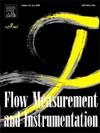Hydrodynamic cavitation induced by different nozzle shapes in pressurized conduits, instrumented by optical detection, searching for pressure correlation
IF 2.3
3区 工程技术
Q2 ENGINEERING, MECHANICAL
引用次数: 0
Abstract
Hydrodynamic cavitation is a valuable technology for water treatment applications. It is well known that is capable of degrading molecules, inactivating microorganisms, reducing hardness, among other applications. However, this phenomenon must be controlled to ensure its adequate intensity. The aim of this study was to develop and test a nonintrusive optical system for cavitation detection and control in a modified Venturi tube. The experimental setup of a closed-loop piping system allowed a comprehensive analysis of the cavitation phenomenon, with precise control of flow rate and pressure conditions. Five different nozzle geometries were tested. The device was equipped with a light-emitting diode and a photosensor integrated into a nozzle. The average irradiance provided by the optical instrumentation effectively detected the presence of cavitation bubbles and the occurrence of single-phase flow. In addition, the study identified three robust correlations between dimensionless parameters, modeled using empirical equations that reliably fit the experimental data. These models and the optical detection system provide a consistent tool for identifying two-phase flow conditions in pipelines. The dimensionless ratio between the standard deviation of the pressure and the mean pressure in the section downstream of the nozzle increased with the flow rate and bubble density, reflecting the intensity of the cavitation-induced turbulence. Analysis of the results for the five nozzles led to the identification of the most efficient geometry in terms of pressure drop and cavitation intensity.

求助全文
约1分钟内获得全文
求助全文
来源期刊

Flow Measurement and Instrumentation
工程技术-工程:机械
CiteScore
4.30
自引率
13.60%
发文量
123
审稿时长
6 months
期刊介绍:
Flow Measurement and Instrumentation is dedicated to disseminating the latest research results on all aspects of flow measurement, in both closed conduits and open channels. The design of flow measurement systems involves a wide variety of multidisciplinary activities including modelling the flow sensor, the fluid flow and the sensor/fluid interactions through the use of computation techniques; the development of advanced transducer systems and their associated signal processing and the laboratory and field assessment of the overall system under ideal and disturbed conditions.
FMI is the essential forum for critical information exchange, and contributions are particularly encouraged in the following areas of interest:
Modelling: the application of mathematical and computational modelling to the interaction of fluid dynamics with flowmeters, including flowmeter behaviour, improved flowmeter design and installation problems. Application of CAD/CAE techniques to flowmeter modelling are eligible.
Design and development: the detailed design of the flowmeter head and/or signal processing aspects of novel flowmeters. Emphasis is given to papers identifying new sensor configurations, multisensor flow measurement systems, non-intrusive flow metering techniques and the application of microelectronic techniques in smart or intelligent systems.
Calibration techniques: including descriptions of new or existing calibration facilities and techniques, calibration data from different flowmeter types, and calibration intercomparison data from different laboratories.
Installation effect data: dealing with the effects of non-ideal flow conditions on flowmeters. Papers combining a theoretical understanding of flowmeter behaviour with experimental work are particularly welcome.
 求助内容:
求助内容: 应助结果提醒方式:
应助结果提醒方式:


